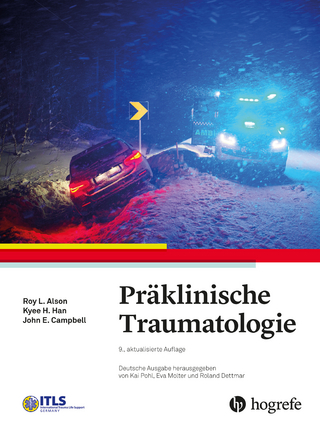
Optimization of Aerosol Drug Delivery
Springer (Verlag)
978-90-481-6436-3 (ISBN)
The success of therapy with the application of aerosolized medicaments depends on the possibility to deliver the proper amount of drug to the appropriate sites in the respiratory system, thus limiting the side effects to a minimum.
Aerosol therapy has significantly improved the treatment of a variety of respiratory diseases. Besides the treatment of respiratory diseases there is currently also a great interest to use the lungs as a portal to introduce drugs for systemic therapy.
The success of therapy with the application of aerosolized medicaments depends on the possibility to deliver the proper amount of drug to the appropriate sites in the respiratory system, thus limiting the side effects to a minimum. Aerosolized delivery of drugs to the lung is optimized if, for a given chemical composition of a medicine, the target of deposition and the required mass of drug to be deposited are precisely defined.
The next step is the specification of the number of respirable particles or droplets, to be generated by appropriate devices. Another very important factor for successful aerosol therapy is the condition of the patient coupled with his or her inhalation technique.
A history of the development of therapy by jet nebulisation.- Molecular modelling in drug design.- Particle elaboration using supercritical media for drug delivery into the human lungs.- Electrospray as means to produce monodisperse drug particles.- Optimization of dry powder aerosols for systemic drug delivery.- Recent advances in drug delivery via pressurised metered-dose inhalers.- Resuspension of powders and deposition of aerosol particles in the upper human airways.- Transport and deposition of hydrophilic drug particles in the lungs.- Ventilation modelling and drug deposition in very young asthmatic children.- Modeling aerosol drug delivery.- Application of electro hydro dynamic atomisation in the production of engineered drug particles.- Interaction of deposited aerosol particles with the alveolar liquid layer.- Pulmonary deposition and effects of aerosolized drugs in pulmonary patients.- Targetting aerosols to disease areas.- Treatment of asthma patients under severe conditions.- Understanding the mechanisms of local pulmonary drug absorption and metabolism: An in vitro model of the airway epithelium.- Overview.- Keyword Index.- List of Authors.
| Erscheint lt. Verlag | 30.12.2010 |
|---|---|
| Zusatzinfo | IX, 315 p. |
| Verlagsort | Dordrecht |
| Sprache | englisch |
| Maße | 155 x 235 mm |
| Themenwelt | Medizinische Fachgebiete ► Innere Medizin ► Pneumologie |
| Medizin / Pharmazie ► Medizinische Fachgebiete ► Pharmakologie / Pharmakotherapie | |
| Medizin / Pharmazie ► Pflege | |
| Naturwissenschaften ► Chemie | |
| Naturwissenschaften ► Physik / Astronomie ► Angewandte Physik | |
| ISBN-10 | 90-481-6436-2 / 9048164362 |
| ISBN-13 | 978-90-481-6436-3 / 9789048164363 |
| Zustand | Neuware |
| Informationen gemäß Produktsicherheitsverordnung (GPSR) | |
| Haben Sie eine Frage zum Produkt? |
aus dem Bereich


